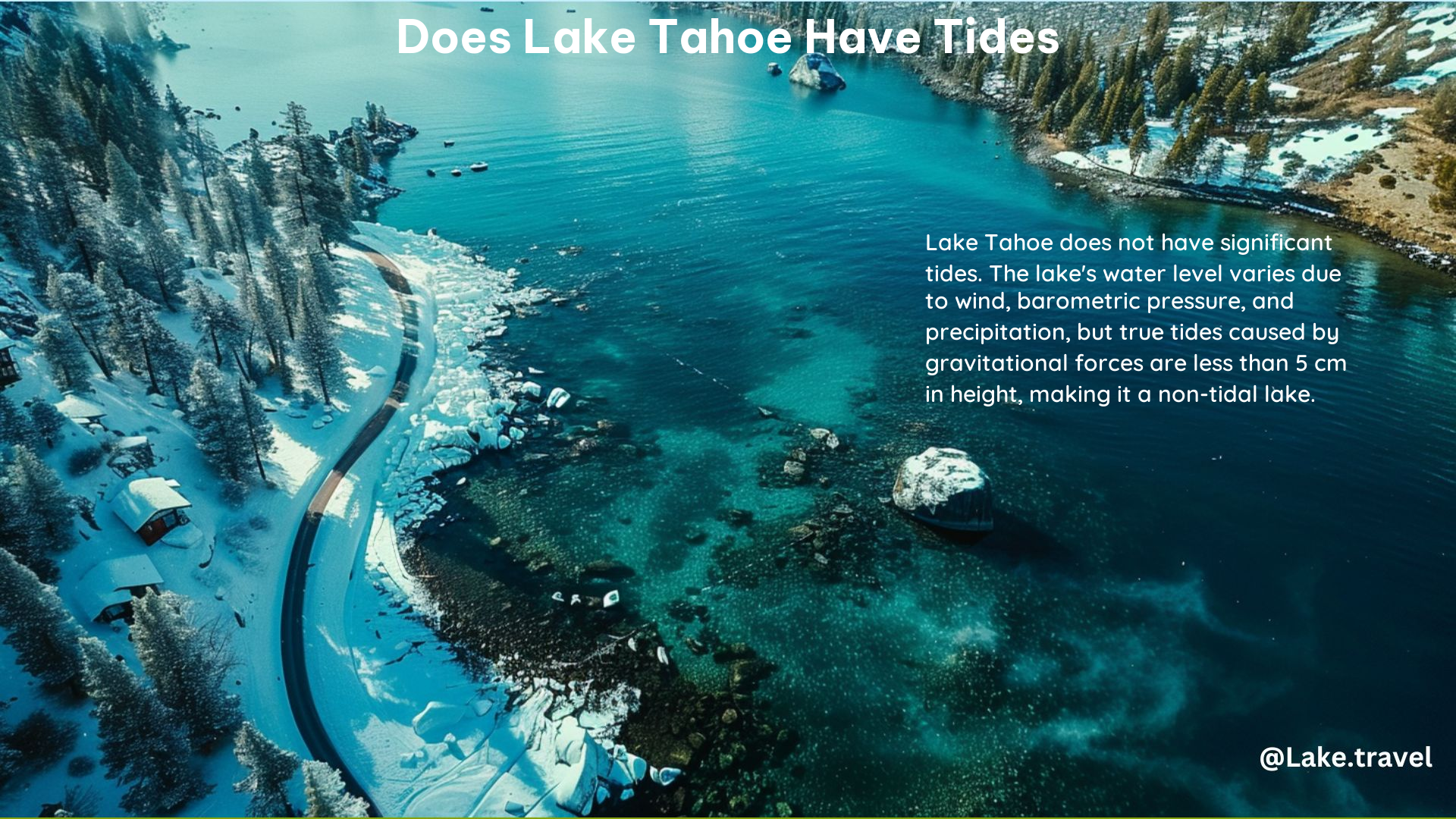No, Lake Tahoe does not experience tides like the ocean. While the lake does have water level changes, these changes are not caused by the gravitational forces of the sun and moon, which are the primary drivers of ocean tides. Instead, the water level changes in Lake Tahoe are primarily influenced by other factors such as precipitation, evaporation, and human activities like dam management.
Seasonal Water Level Changes in Lake Tahoe
Lake Tahoe’s water level typically rises about 15 inches during the spring runoff, assuming the outlet gates are closed. This seasonal change is caused by the influx of snowmelt from the surrounding mountains, which feeds into the lake.
Evaporation and Its Impact on Lake Tahoe’s Water Level

The lake loses about two-thirds of its water through evaporation, which occurs at an average rate of 0.1 inches per day. This constant loss of water due to evaporation is a significant factor in the water level changes of Lake Tahoe.
Dam Management and Water Level Regulation
The dam at Tahoe City regulates the upper 6.1 feet of Lake Tahoe above the low water rim, controlling the water level. This human-made structure plays a crucial role in managing the lake’s water levels, particularly during periods of high or low precipitation.
Comparison of Lake Tahoe’s Water Level Changes to Ocean Tides
Height Differences
The water level changes in Lake Tahoe are much smaller than those in the ocean. The highest tide recorded in Lake Tahoe is around 3.28 feet, whereas ocean tides can be much higher, often exceeding 10 feet.
Frequency Differences
Lake Tahoe’s water level changes do not follow a semi-diurnal pattern like ocean tides, which typically have two high and two low tides daily. Instead, the water level changes in Lake Tahoe are more gradual and influenced by seasonal and climatic factors.
Factors Influencing Lake Tahoe’s Water Level Changes
Precipitation
The amount of precipitation, particularly snowfall, in the Lake Tahoe basin has a significant impact on the lake’s water level. Increased precipitation leads to higher water levels, while periods of drought can result in lower water levels.
Human Activities
In addition to natural factors, human activities such as water management, irrigation, and development can also affect the water level of Lake Tahoe. The dam at Tahoe City, for example, is a human-made structure that plays a crucial role in regulating the lake’s water level.
Conclusion
In conclusion, Lake Tahoe does not have tides like the ocean. Its water level changes are primarily driven by local factors such as precipitation, evaporation, and human activities, rather than the gravitational forces of the sun and moon. While the lake does experience water level fluctuations, these changes are much smaller in scale and frequency compared to ocean tides.
References:
1. https://myforecast.co/bin/tide_extended.m?city=12214&metric=false&tideLocationID=T11171
2. https://seatemperature.info/lake-tahoe-tides.html
3. http://www.tahoefacts.com/lake-tahoe
4. https://seatemperature.info/north-lake-tahoe-tides.html
5. https://oceanservice.noaa.gov/facts/gltides.html
